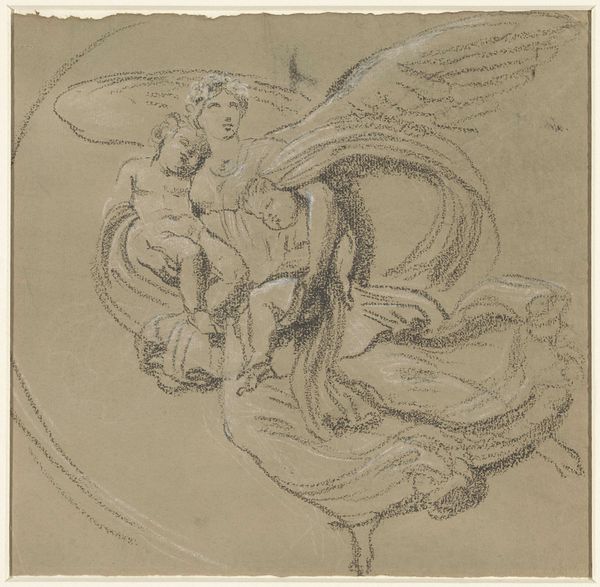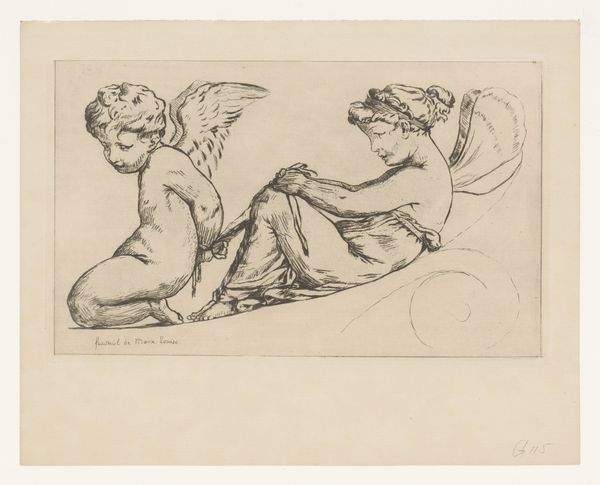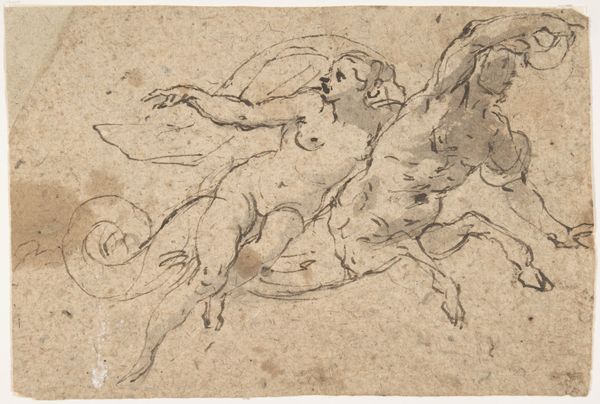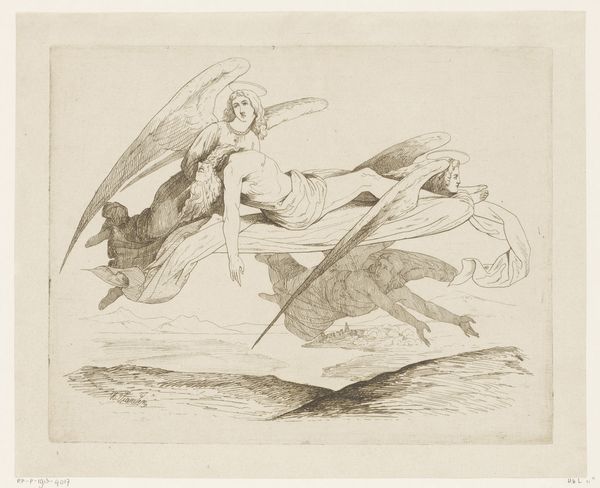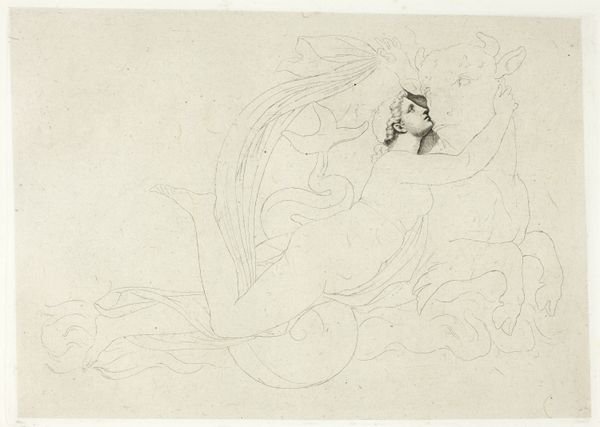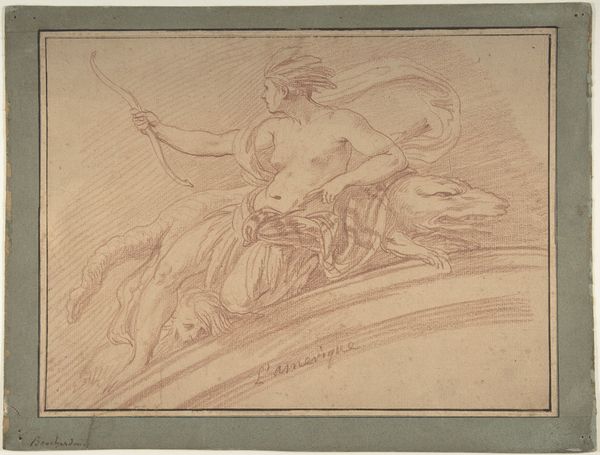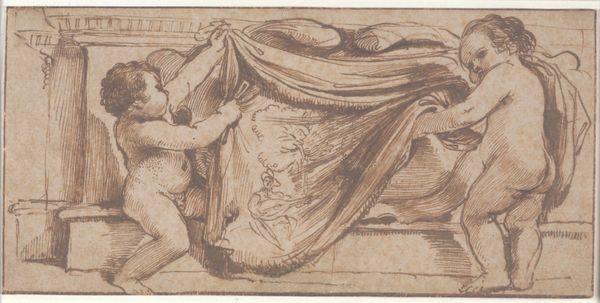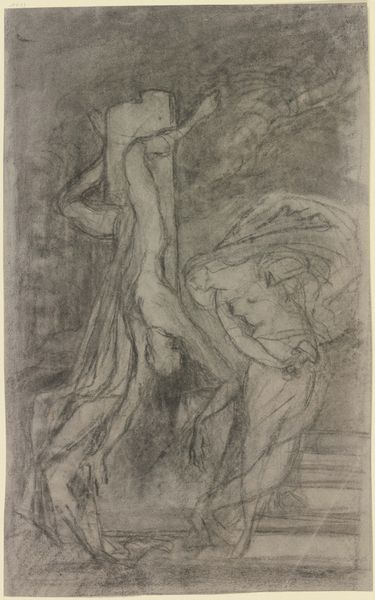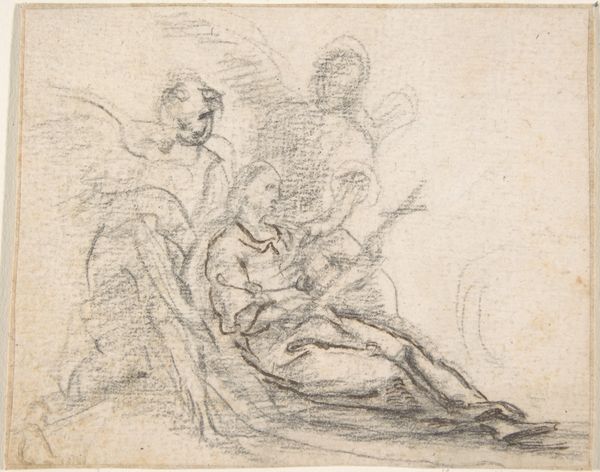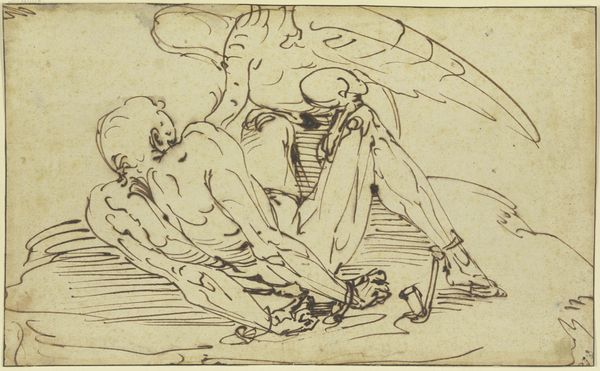
Design for a Frieze: A Nude Man, Sea Creature, a Garland and Volutes, Small head of Unicorn 1600 - 1630
0:00
0:00
drawing, ink
#
drawing
#
ink drawing
#
mannerism
#
11_renaissance
#
ink
#
nude
#
male-nude
Dimensions: sheet: 4 1/2 x 11 in. (11.5 x 28 cm)
Copyright: Public Domain
Curator: What strikes me immediately about this design is the dynamic tension between the figures and the swirling, almost turbulent, lines that seem to engulf them. It's unsettling yet beautiful. Editor: This drawing, "Design for a Frieze," thought to be from the early 17th century, offers a glimpse into the decorative arts of the period. Created by an anonymous artist, it features a nude man, a sea creature, and various ornamental motifs, rendered in ink. Curator: The line work is incredible. Look at how the artist uses thin and thick lines to suggest volume and movement. It's like the figures are caught in a perpetual state of flux, mirroring the Baroque interest in dynamism and emotion. Are there indications that this was produced during that time? Editor: While the style suggests a connection to Mannerism, the specific social context is difficult to determine definitively without knowing the patron or the intended location of the frieze. These designs were frequently circulated among artists and patrons, leading to difficulty ascribing origins. We do know that artists would provide these examples to their rich and influential patrons. Curator: I am fascinated by how this work embodies a kind of paradox, right? The classical subject matter and figures clash with the almost frantic, swirling energy. I would be curious about the intent. Is this meant to convey power, instability, or perhaps something else entirely? Editor: Precisely! It could be viewed through the lens of patronage and the socio-political climate of the time, perhaps reflecting the uncertainties and anxieties amidst religious and political upheavals in Europe. Such ornamentations were intended to impress and showcase the owner's worldly views. Curator: It really opens up this incredible space of possibility when thinking about how art plays within society to signal specific narratives, not always direct and to be received through emotion as a key signifier. Editor: Indeed, the frieze allows us to reflect on what art, even in its more ornamental forms, says about power, aspiration, and the cultural landscape of its time. Curator: This detailed formal consideration really shifted how I thought about what this work represents and it emphasizes to me the everchanging dynamics that define visual forms. Editor: I'm intrigued how a deeper engagement with history opens new considerations in our interpretation, linking decorative art back to significant moments of shifting values and political landscapes.
Comments
No comments
Be the first to comment and join the conversation on the ultimate creative platform.
